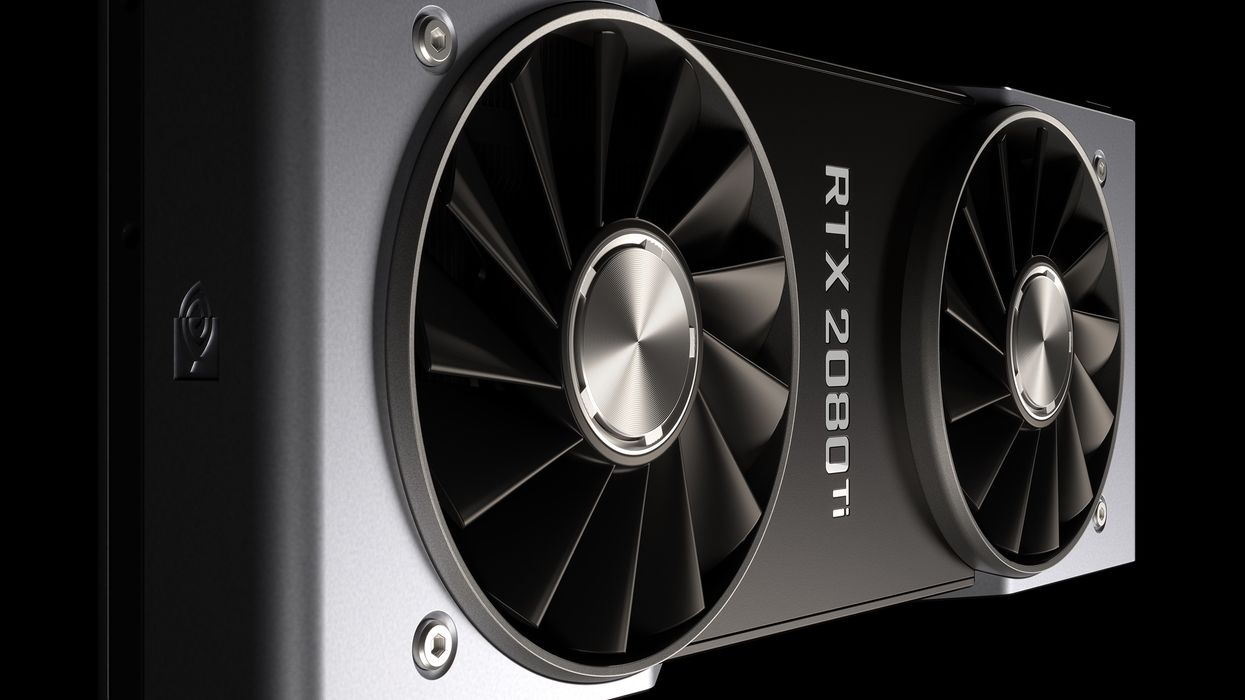NVIDIA Announces New 2080 Cards with Links and 8K Playback Support
The graphics giant has rolled out its 2080 line, promising huge power at affordable prices.

The last decade has seen a tremendous growth in the amount of video processing moving to the graphics card. As resolutions and file sizes have increased, video post has largely handled the size by increasing the power of the GPU, often taking advantage of the NVIDIA CUDA programming model.
For the last two years, the 1000 series has been the top of the line for NVIDIA, with massive cryptocurrency driving up the price. Now that the price has somewhat stabilized, NVIDIA has released its latest major upgrade, the 2080, utilizing the Turing architecture and AI technologies to create faster, higher resolution playback.

Whether you are running Resolve, Premiere, or Media Composer, these powerful cards will offer benefits to your workflow. The new line of cards claim 4-6x improvement over the last generation, with up to 10x improvement in certain areas like ray tracing (more useful in VFX application than in edit and color).
The company has already released the RTX Link, a connector for linking two graphics cards within your system for faster communication than could occur through the logic board. Considering the frequency of multi-GeForce setups (in Linux boxes or even in external Cubix Expanders) we see in post, we're excited to see if these links offer playback benefits.

This is on top of the previous announcement (discussed on reduser) that NVIDIA is getting real-time 8K video playback out of its Turing architecture GPUs, the first of which, the Quadro RTX line, rolled out on August 13th. The Quadro line is targeted at professionals, however, and while certain applications will sometimes get equal performance from GTX cards that you might see from Quadro cards, if you want realtime 8K playback of RED files, you will have to pay the steep premium that Quadro cards command in pricing.
RED is claiming that the benefits will roll out in December to any CUDA enabled card, which means big improvements will be seen in cards like the 1080ti. Even if the more affordable cards can't do "full res premium" playback from 8K, if we can get to half res playback on 8K, that should be enough for stellar images to work with on most monitors (and is better than the 1/4 res playback many of us work with on older, less powerful systems).
This type of development from NVIDIA and the continuing commitment to improving CUDA leaves Mac users frustrated, of course. Mac released its last NVIDIA enabled machine in 2013 with the Macbook Pro Retina 15", having a CUDA capable mobile graphics card. However, there remain swirling rumors of a PCI capable Mac Pro for 2019, so if that were to return to the scene, it is definitely possible that we'll see users sticking 2080 cards in that slot for super powerful systems.

The new GeForce cards, which you are more likely to see in indie post houses, production companies and one mule team setups, will launch September 20th, with prices coming in at $599 for the GeForce RTX 2070, $799 for the RTX 2080, and the top of the line RTX 2080 Ti landing at $1199.
Check out the NVIDIA press release for more info on the top of the line Quadro cards and the NVIDIA page for more on the GeForce cards.
Tech Specs (2080ti):
- 1635 MHz (OC) boost clock, 1350 base clock
- 11GB GDDR6 14 Gbps memory
- Up to 4 monitors
- 7680x4320 display resolution max
- 250W graphics card power, 650W recommended system power
- 2-slot











